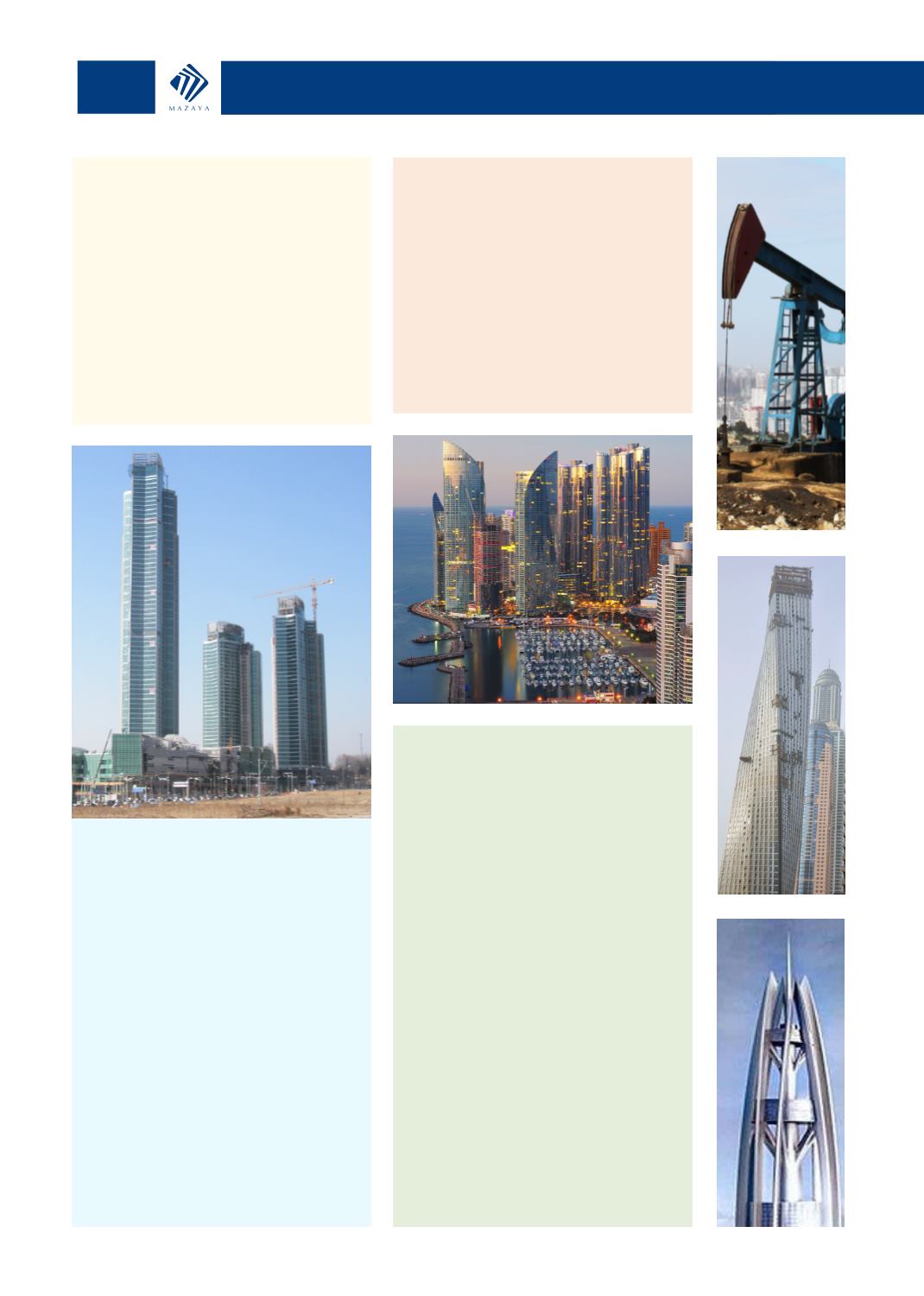
According to the reports issued in this
regard, the GCC States have spent nearly
US$112 billion during 2012, or 7.1 %of the
gross product of the GCC States, while
their capital expenditure is expected to
increase by 8.2 % at the end of the current
year due to the continuation of existing
projects, and the implementation of a
large number of new ones. In addition, the
rail projects to be implemented in Doha,
Riyadh and Abu Dhabi will develop radical
solutions to the traffic congestion in the
major cities, and will also increase the
capital expenditure in the coming years.
The Al Mazaya report has also shown
that the Kingdom of Saudi Arabia leads
government spending on infrastructural
projects in the region, where several
projects are being implemented to
improve the infrastructure in all sites and
cities of the Kingdom of value up to $77
billion. These projects are targeted at
roads, bridges, railways, and developing
petrochemical and electric power projects.
Within the same vein, specialized reports
have talked about the victory of Hyundai
Heavy Industries with a contract worth
$3.3 billion from the Saudi Electricity
Company to build Al Shuqaiq Complex
for generating electrical power, while
the Ministry of Housing has recently
issued eight contracts with a total value
up to $1 billion for the implementation
of infrastructural works in several cities,
including Jeddah, Medina, Dammam, Al
Qatif and Al Kharj.
Moreover, the High Commission for
the Development of Riyadh signed
contracts worth more than $22 billion for
the implementation of the Riyadh Metro
Project, and it is estimated that the plans
and projects to be implemented in the
petrochemicals sector will amount to $70
billion over the next few years.
In the context of partnerships between the
government and private sectors, whether
directly with governments or indirectly,
the infrastructure projects are regarding
as promising investment opportunities for
banks operating in the Gulf States.
Due to the large and diverse size of the
infrastructural projects which almost cover
the development projects plans accredited
to the GCC States up to 2030, these
projects must have sources of funding to
be completed, and must enter the banking
sector with the the necessary lines of
funding lines along with government
generous spending.
The majority of the development projects
for 2030 in the GCC States are targeted at
developing airports, ports, power stations,
roads and bridges, as well as the health
and education sectors. The sources of
funding are the biggest challenge for the
implementation of these projects on time,
since banks are not attracted to these
projects due to their delayed returns and
revenues. The GCC States are expected to
spend more than $60 billion on the health
sector and the construction of hospitals
by 2025, with an increase of 9% on an
annual basis. During the last years, more
than 200 projects for the construction of
hospitals and medical centers by the year
2015 have been outlined or begun, due to
the high current demand on the internal
and external hospitalization.
Mazaya Monthly Real Estate Report - October 2013
3


